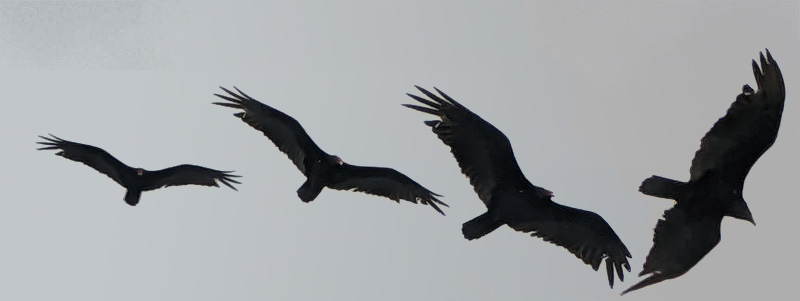
This Golden Eagle soared past me today and I managed to capture a couple of frames. Magnificent to watch.
Art & Robotics

This Golden Eagle soared past me today and I managed to capture a couple of frames. Magnificent to watch.
I’ll admit I’m a HUGE believer of advances in Artificial Intelligence. Deep learning or just general machine learning. From Bayesian beginnings to GANs and CNNs, I’m all about data, ML and all of the promises it’s future holds. The problems it can solve today seemed impossible just 10 years ago. So naturally when I learned of the 2021 release of Atlas of AI I immediately ordered it.
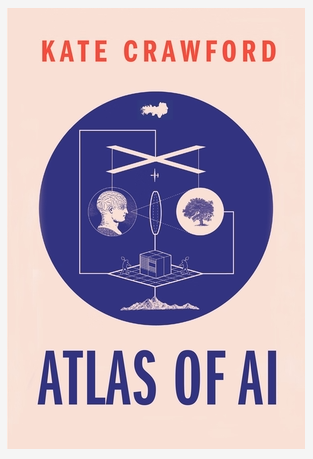
When it arrived I dove into the text, eager for more knowledge and understanding in this exciting field.
But instead of excitement and being a sponge for fresh knowledge, I found the first chapters draining. Like earth-depleting depressing.
At first I pushed back in my mind – “Not that bad” etc.
Honestly I think in my exuberance I didn’t even read the book’s subtitle “Power, Politics, and the Planetary Costs of Artificial Intelligence”.
I know there is a cost to all technology and literal or figurative “mining” excel at wasting resources, stressing environments but I wasn’t ready to read more doom and gloom at that time. The book went on the shelf.
Fast forward over a year later to my first fossil-fuelled odyssey in three years. A 10,000 km round-trip flight, 10+ hours in the air and I need a book…
ROUND 2: I began Atlas of AI again and re-read those first chapters with much less scrutiny, bias, and a far more open mind. As someone who has paid to use heavy GPU time on Colab to generate frivolous, yet remarkable images, I may need to look in the mirror.
Once I shed my reactionary defence of all things ML I began to understand and even appreciate the author’s point of view. I do believe many corporations will also begin to weigh ethical and environmental costs of Artificial Intelligence.
Today’s announcement by Microsoft to retire facial inference of emotional state is just one instance where I see more companies coming to terms with the ethics of AI. Perhaps guided by this book.
A must-read for anyone practicing ML
What is it?
It’s an open source electronics kit, the Adafruit Macropad, embedded in a solid block of quarter-sawn tigerwood.
What can it do?
It’s a programable HID keyboard with OLED display and rotary encoder running CircuitPython. Which is a hardware specific, light-weight port of Python for microcontrollers.
The keys have RGB LEDs and can be programmed to send single or multiple keystrokes to the computer.
It shows up as a mountable drive, you can live-edit the code.py file so
when you save, the new code is automatically loaded. No compiling.
Similar to other computer mice, keyboards, or other peripherals it’s powered by USB so it does not run standalone.
The Woodworking began as a solid block of South American Tigerwood. Nice pattern and hardness but I can’t say I enjoy the smell of this wood. It’s got a gluey stank which is not particularly enjoyable.
I used a bandsaw to take a 1/4 inch veneer off the top. This will be the cover.
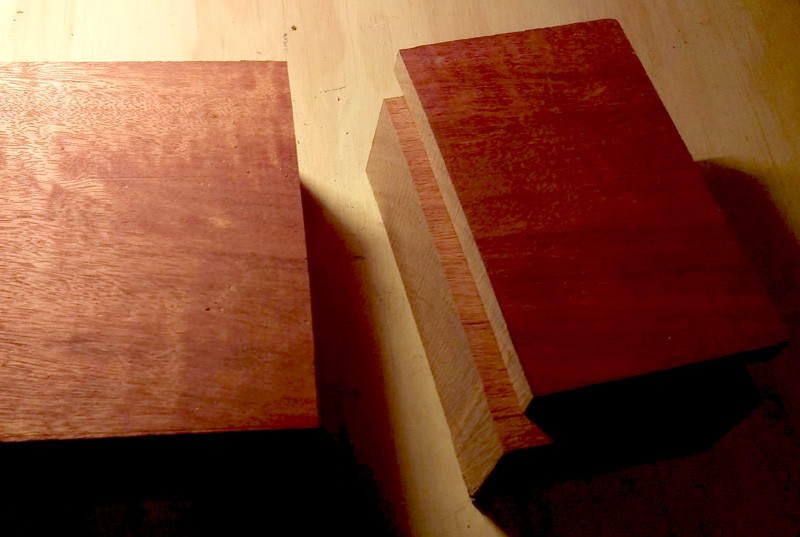
The bottom base was hollowed out using a plunge router. A device you must respect. It can clear out a lot of material quickly but at 10k to 30k RPMs it can easily get away from you in a hurry. Safety always first.
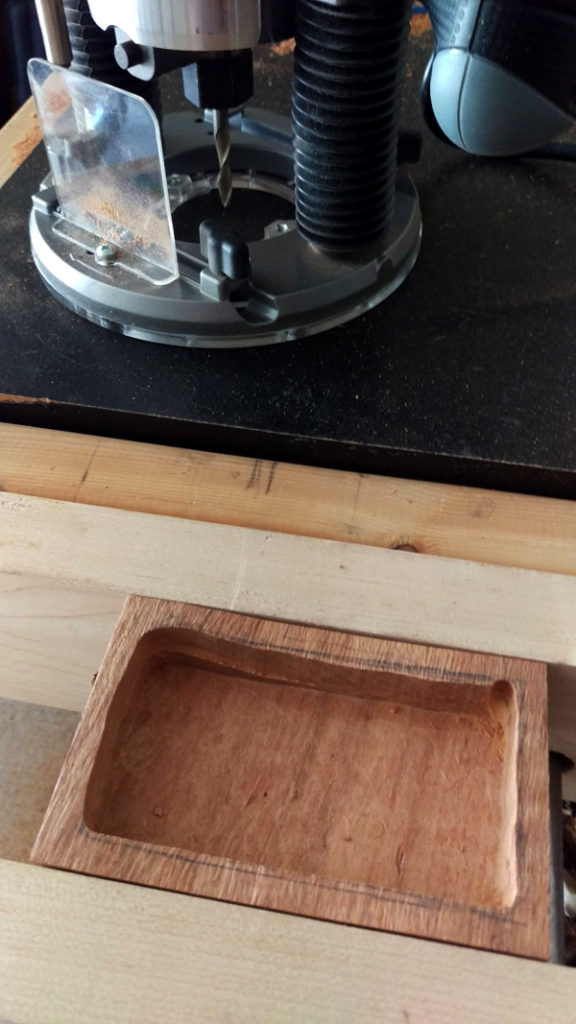
The two two pieces were then carved and fitted to accept the Macropad. It’s a bit of a shame to seal up the beautiful silkscreen art of this particular PCB.
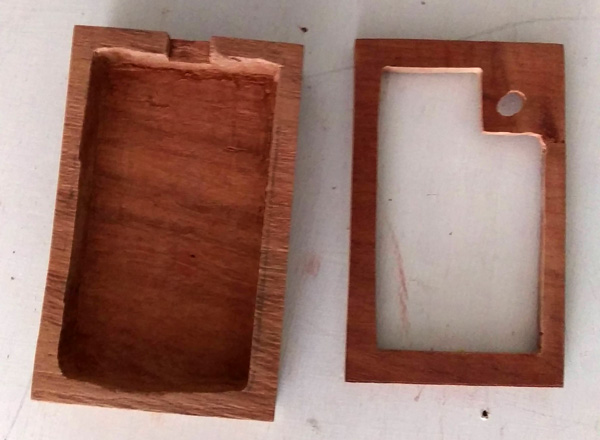
The fitted Macropad had one other addition. I used a cut down credit card sized plastic magnifying glass using lenticular? magnification. The offset from the OLED gives the display a slight floating feeling.
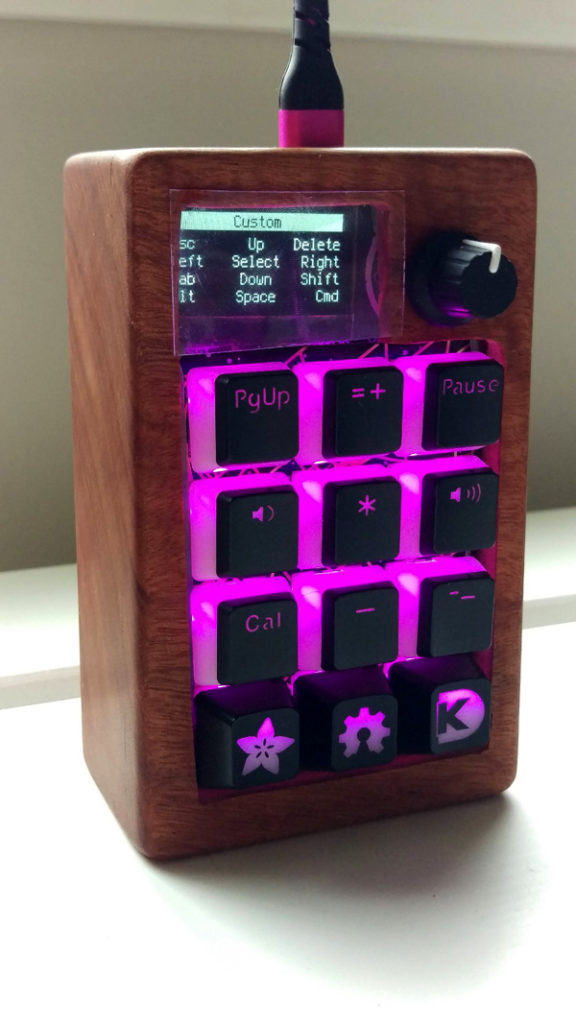
Macrophotograpy of the Macropad
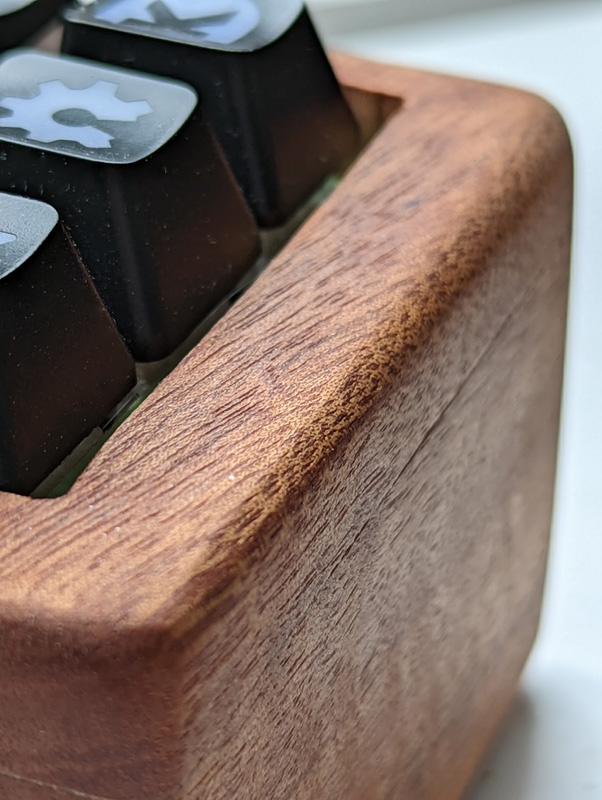
The project was finished with a couple coats of MInwax Tung Oil finish. Not a “true” tung oil but it makes the grain pop while not filling the wood pores.
The seams are a little more visible than I would like. From a distance however it’s not that noticeable. I’ve learned that minimal handling is required after separating using the “bandsaw box” technique to prevent “dings”.
As for programming I’m mainly using the application hotkeys demo found on the Adafruit Learning Guide but the sky is the limit because it can be programmed to do anything a keyboard or mouse can do.
Motivation to write this up comes from the recent Hackaday.io contest for Odd inputs and peculiar peripherals.
I’ve been really impressed with the Merlin App for Android Sound ID.
There have been a few birds that I have not been able to spot or identify visually but using Sound ID I can quickly pull up and confirm which bird I’m hearing.
The Pacific Wren has an amazing song and I noticed for years the calls but I’ve still yet to see one.
Also particular impressive was it’s recognition of the Stellar’s Jay non-screechy vocalizations.
Every so often I’m motivated to move my online content in-house. With todays purchase of Twitter my intent to “own” my content has been renewed.
I’m going to clean up my old Feedly RSS subscriptions and try posting here a bit more frequently.
You can subscribe if you like – https://www.somenice.com/feed/
What is a feed? What is RSS? Here is a great explainer from Matt Webb – aboutfeeds.com